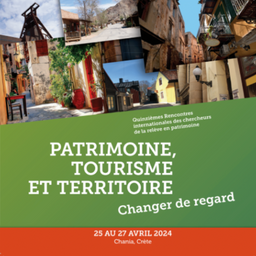Playing with your culture and getting caught up in the game: a study of the economic and heritage role of embroidery among the Hmong of French Guiana
My Session Status
Initially violently opposed by the Guyanese population and deliberately built in a landlocked area, the village of Cacao has since the 1980s become a must-see tourist attraction in French Guiana.
During the week, this village of Hmong farmers is incredibly quiet. All you can hear is the sound of quads going to the fields, the rain beating against the tin, and the murmur of a few women singing. Yet on Sundays, from the early hours of the morning, the village comes alive. Guyanese and tourists of all nationalities flock to the village. And with good reason: the Hmong hold their market. At the market, visitors can enjoy the “traditional Hmong soup,” actually of Vietnamese origin, as well as Asian fried foods and glutinous (sticky) rice desserts. But the market is not just about food. Under the village halls, huge embroideries hang. Tourists, their mouths full, admire the artworks, exclaiming: “Ah, this is so typical, it’s like being in Asia!”
Two types of embroideries are present in the village. Both play a part in promoting the heritage of the Hmong community, but in almost opposite ways. Cross-stitch embroidery on clothing is described in the oldest Hmong stories. It identifies the different Hmong clans and was used by several legendary heroines for defense and protection. However, the embroideries that most appeal to tourists are the “narratives.” They first appeared in Thailand in the 1970s.
The aim of the embroiderers at the time was to turn the passive waiting of the refugee camps into income. The main theme of these embroideries is the flight from Laos to the host countries. Over the years, embroiderers have adapted the themes to make them more attractive to tourists.
While tourism is presented by some as a way of revitalizing Hmong traditions that could otherwise be be lost, some Hmong regret the folklorization of their living environment. A few years ago, tourists would come into families’ homes to photograph them while they ate. Today, they may be more discreet, but tourists have not abandoned their cameras and their invasive desire to photograph the daily lives of this people who are different from their own.
Faced with the tourist phenomenon, several questions arise for the locals. Should they encourage the essentialization of Hmong culture and make a profit from it? Does the folklorization of the village play a role in the loss of identity for young Hmong of French nationality? Have the Hmong lost sight of the original meaning of their traditions? On the contrary, does this valorization enable the younger generations to seize upon the Western notion of intangible heritage to enhance their culture?
These questions are explored here using the example of the valorization of Hmong embroidery.

Discussion